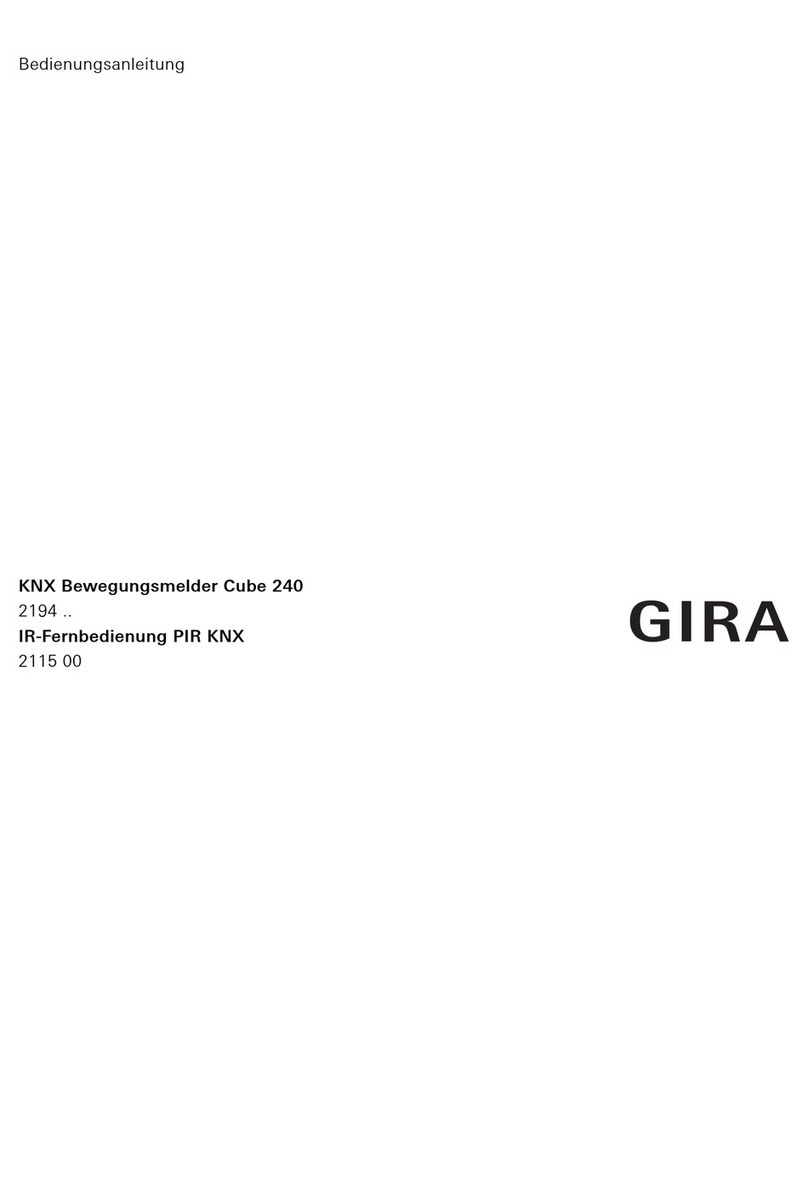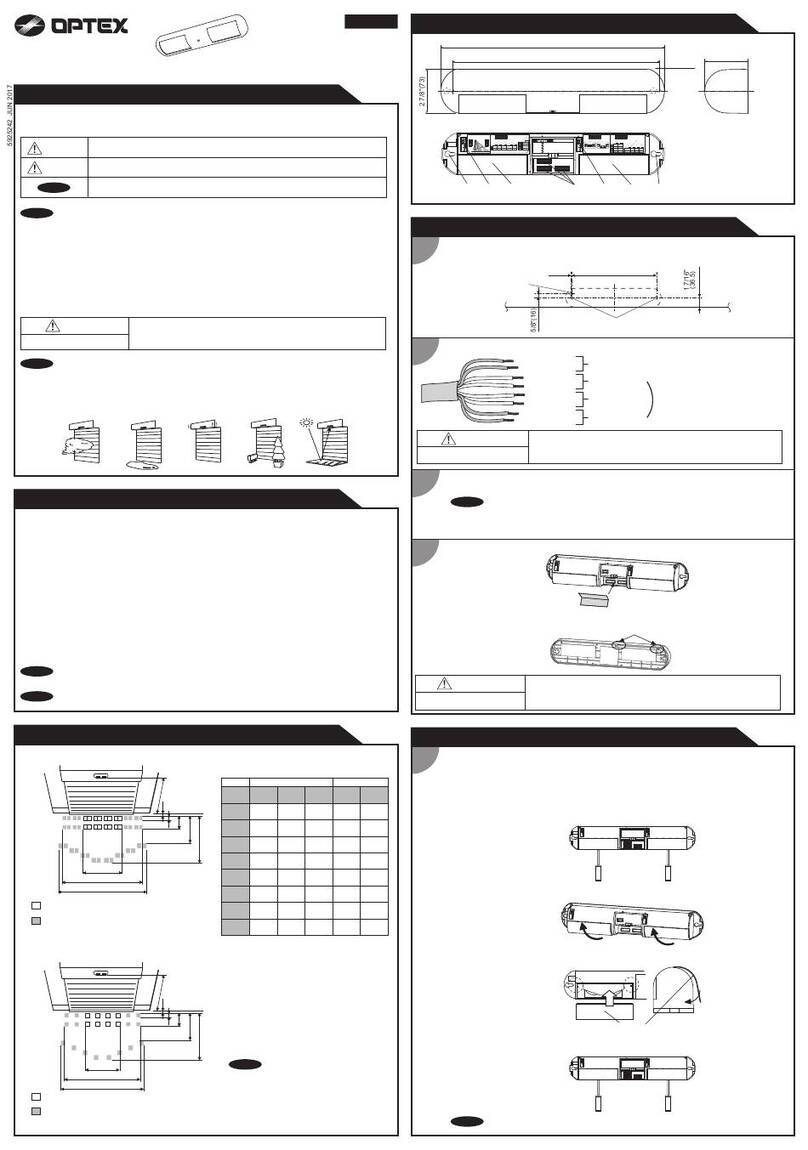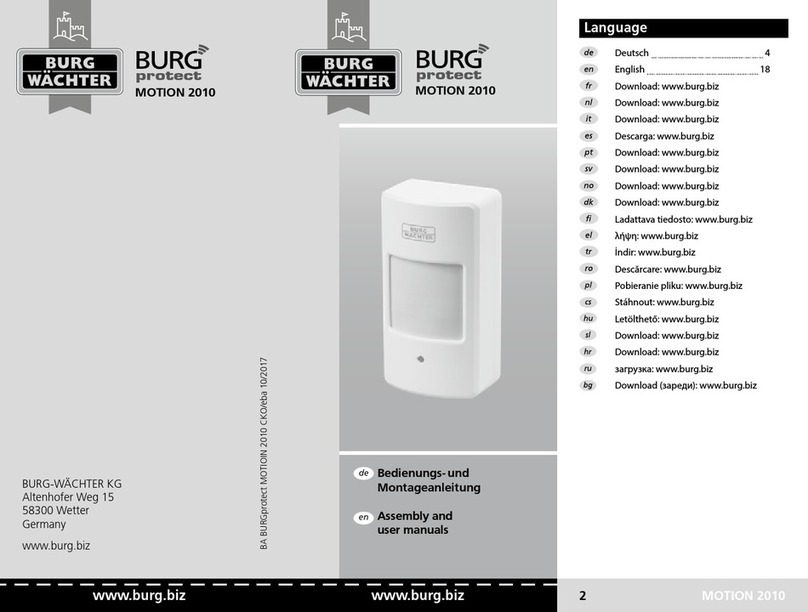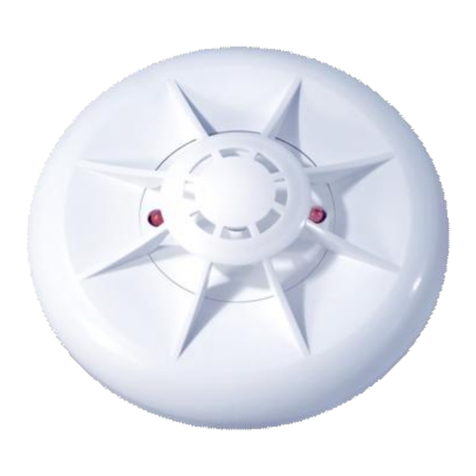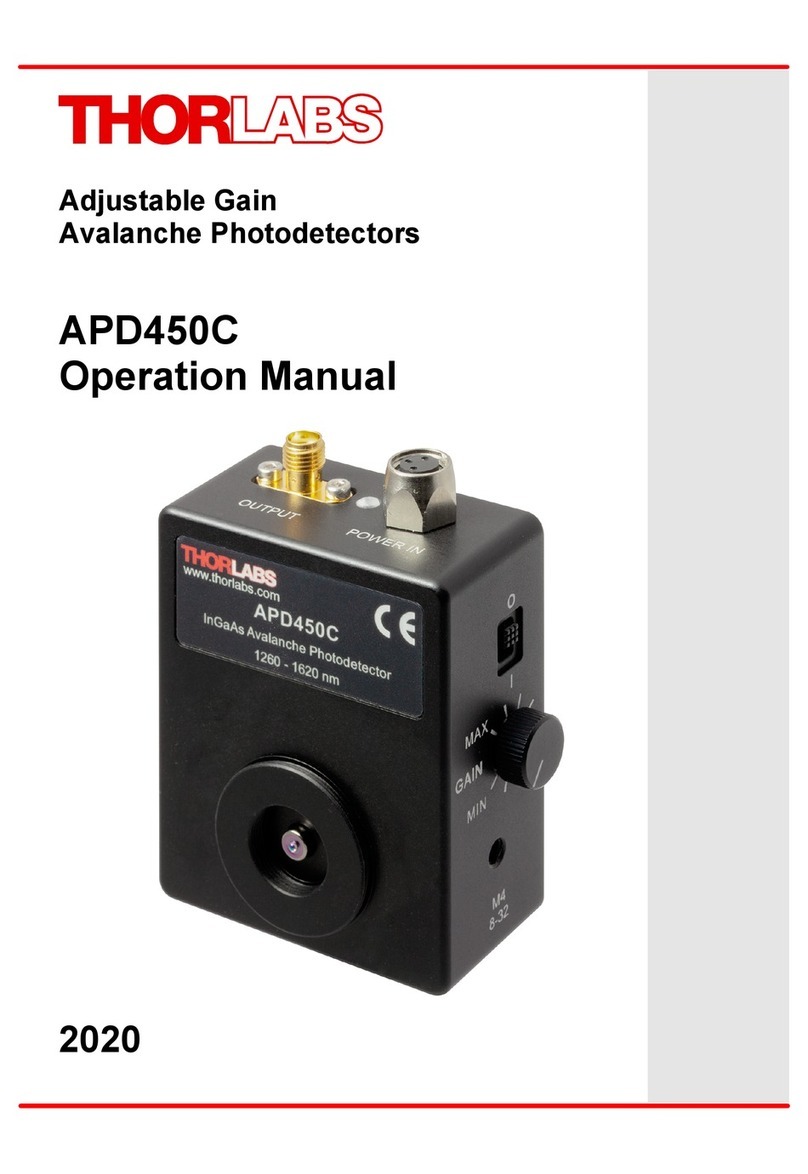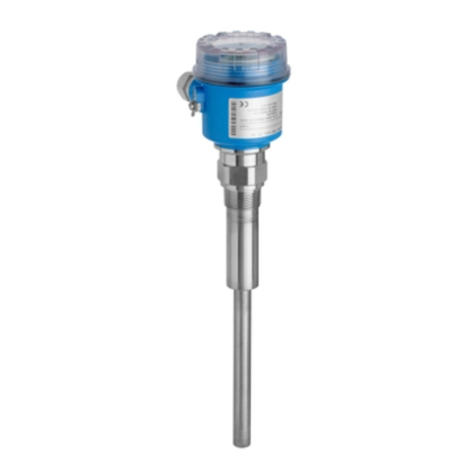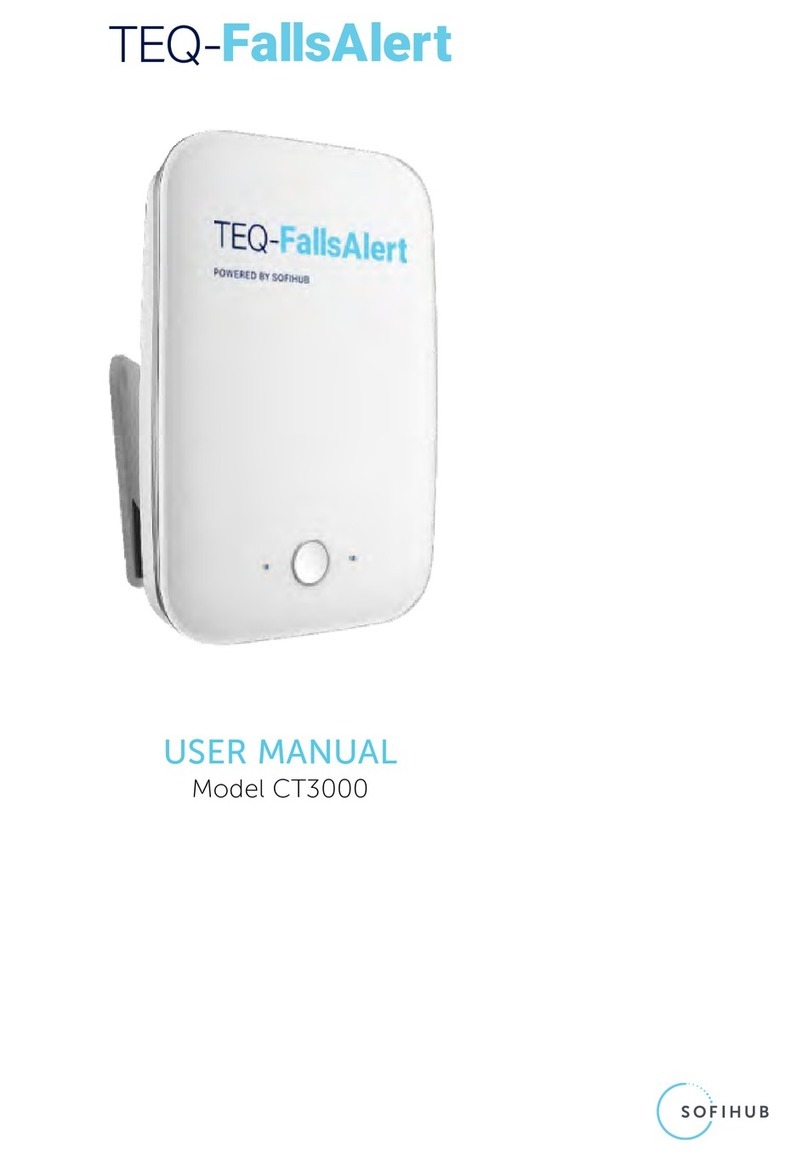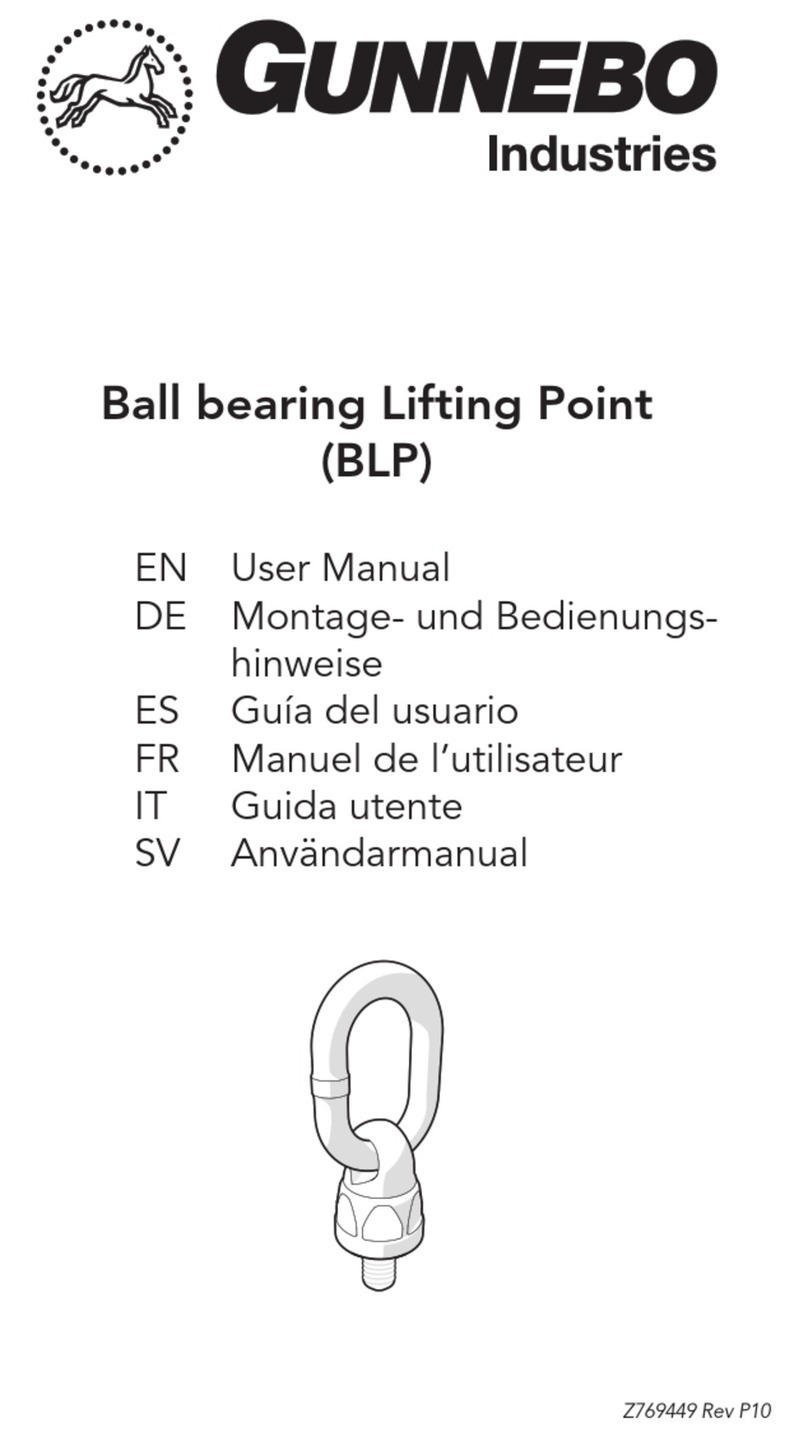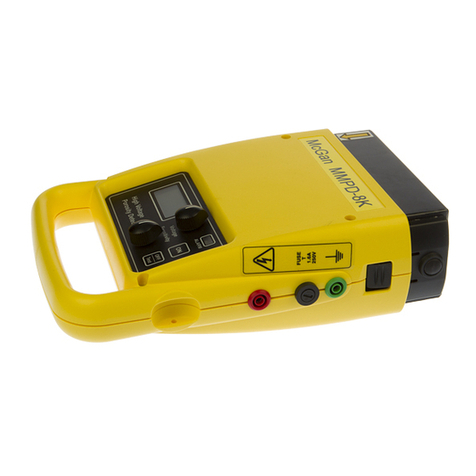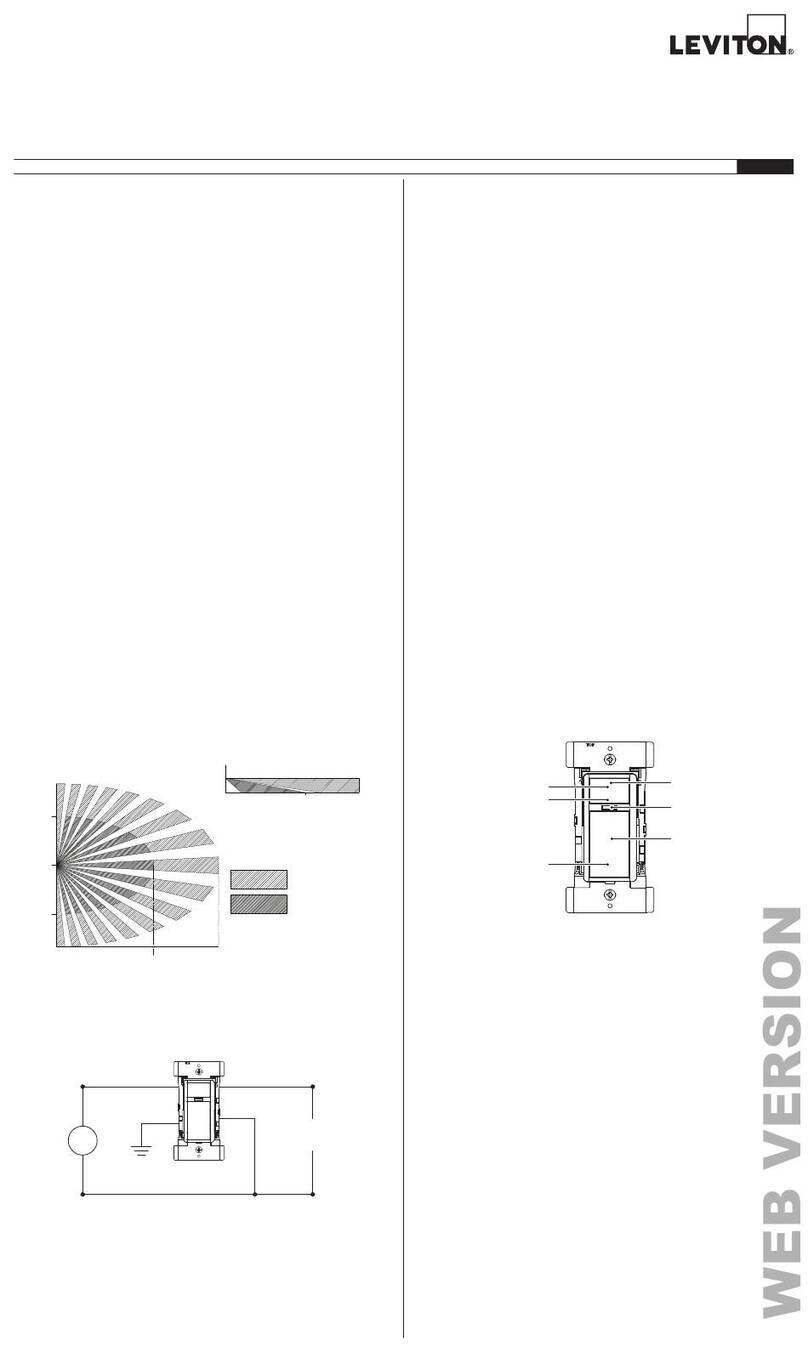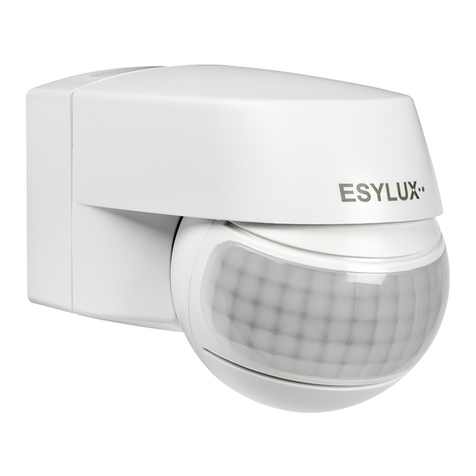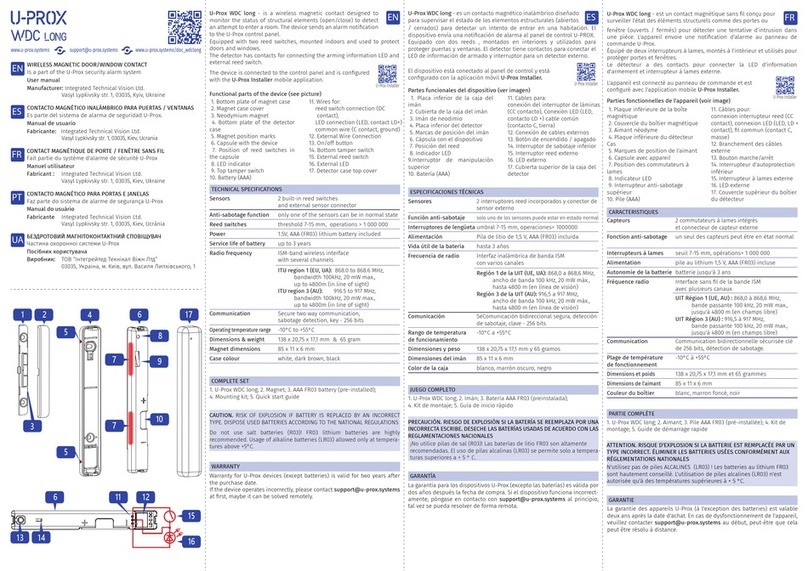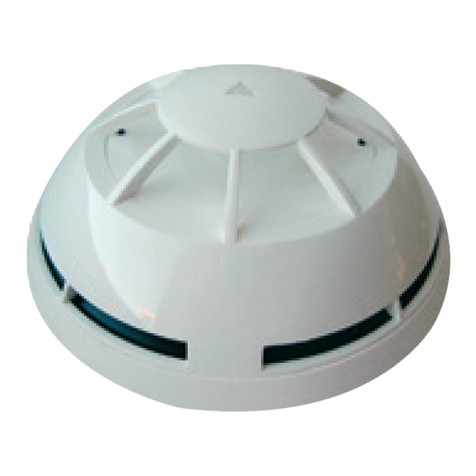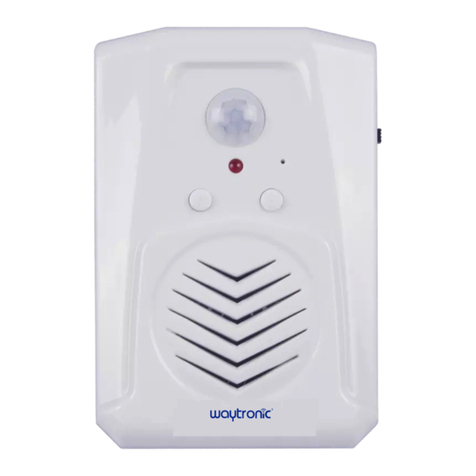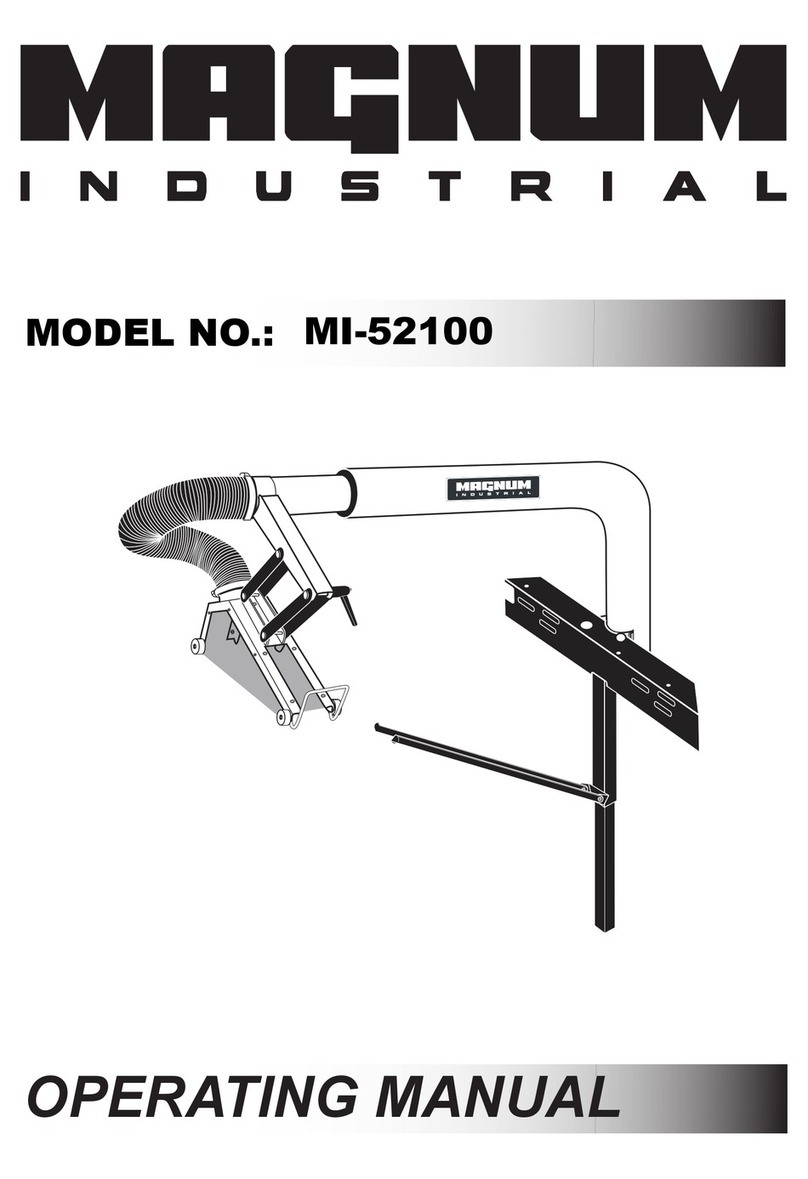Gira 2050 Series User manual

Motion detector Comfort 1.10 m
Order No. : 2050..
Motion detector Standard 1.10 m
Order No. : 2040..
Operating instructions
1 Safety instructions
Electrical devices may only be mounted and connected by electrically skilled
persons.
Serious injuries, fire or property damage possible. Please read and follow manual fully.
Do not press on the sensor window. Device can be damaged.
The device is not suitable for use as a burglar alarm or other alarm.
Caution. Damage to sensors may result due to high thermal radiation. Avoid direct
sunlight penetration in the sensor window.
These instructions are an integral part of the product, and must remain with the end
customer.
2 Device components
Figure 1: Device components
1/15
32597022 27.02.2018
Motion detector Comfort 1.10 m, Motion detector Standard 1.10 m
10864544
KNX

Figure 2: Adjuster Sens. (rear side)
(1) Bus coupler 3
(2) Frame
(3) Motion detector
(4) Sensor window
(5) Slide button
(6) Adjuster Sens.
3 Function
System information
This device is a product of the KNX system and complies with the KNX directives. Detailed
technical knowledge obtained in KNX training courses is a prerequisite to proper understanding.
The function of this device depends upon the software. Detailed information on loadable
software and attainable functionality as well as the software itself can be obtained from the
manufacturer´s product database.
Planning, installation and commissioning of the device are carried out with the aid of KNX-
certified software. Full functionality with KNX commissioning software version ETS4.2 and
higher.
An updated version of the product database and technical descriptions are available on our
Internet website.
Intended use
- Requirement-oriented control of lighting and other electrical consumers in interior rooms
- Mounting on bus coupler 3 from Version V01, I01
- Mounting in appliance box according to DIN 49073
iRecommendation: Use air-tight appliance boxes.
Product characteristics
- Automatic switching of light, depending on heat motion and ambient brightness
- 2 PIR sensors
- Detection area 180°
- Integrated brightness sensor
- Adjustable switch-off brightness
- Adjuster for manual adjustment of sensitivity
- Output functions: Switching, value transmitter, light scene extension, staircase function,
switching with forced position, operating mode setting for room temperature controller
- Extension of the detection area by way of operating several devices as main unit or
extension unit
- Status LED
- Manual switching on the device
- Detection field can be dimmed by 50%
Additional characteristics of "Comfort" version:
- Manual operation with IR remote control possible (accessories)
- 5 function blocks for motion detection each with 2 outputs
32597022 10864544 27.02.2018 2/15
KNX
Motion detector Comfort 1.10 m, Motion detector Standard 1.10 m

- Function blocks switchable, e.g. for day/night operation
- Brightness sensor function with 3 limiting values
- Alarm when unplugging from the bus coupler
- Temperature measurement
Motion detection function
The detection of movements is done through the "passive infrared" principle ("PIR"). The device
generally reacts to heat radiation changes within its detection area. This is achieved with the
help of the so-called PIR sensors, which are highly sensitive in the infrared range. The
geometry of the detection field is ensured by a lens system that lets infrared light pass through
and concentrates incident radiation on the sensors. So-called "detection radiation" are formed
through the lens system and cause a clear signal jump to be detected when they enter.
Note: The term "detection radiation" refers to the imaginary line that begins in the sensor, goes
through the lens system and continues in a straight line outside of the device. The device itself
does not emit any radiation.
Figure 3: Thermal image of a person and their reflection on the ground
The detection of heat sources through a motion detector is influenced by the following criteria:
- Geometry of the detection field:
A motion detector that faces downwards at an angle is different from one that looks straight
ahead into infinity (Figure 4).
- Distance between heat source and motion detector: the further away the heat source is
from the sensor, the weaker the evaluable signal on the sensor (Figure 4).
- Size of the heat source, e. g. adult or child (Figure 5)
- Temperature of the heat source: surfaces at 37 °C radiate more intensely than at 10 °C
(Figure 5).
- Contrast between the heat source and the environment: if the heat source radiates just as
intensely as the environment. detection will be significantly more difficult (Figure 5).
- Speed of movement: a faster moving object produces clearer signals in the sensor.
- Direction of movement: if detection radiation passes tangentially, this typically results in an
abrupt sensor signal which can be evaluated well. However, if a heat source moves radial
to the sensor, the sensor signal changes happen more slowly. This makes differentiation
from the background noise significantly more difficult.
- Concentration of the detection field: the number of sectors and switch segments of the
detection field determines the the concentration of the scan and therefore the response
behaviour.
- Sensor sensitivity: the sensor sensitivity can be adjusted according to application and
environment. Low heat contrasts outdoors may require a high sensitivity that is far to high
for indoor use. The sensitivity should be decreased in this case.
- Environmental medium: high humidity or rain can negatively influence the permeability for
infrared radiation.
32597022 10864544 27.02.2018 3/15
KNX
Motion detector Comfort 1.10 m, Motion detector Standard 1.10 m

Figure 4: Detection of heat sources – detection field geometry and distance (photometric
distance law)
Figure 5: Size, insulation and contrast of heat sources
Interference sources for motion detection
In addition to the mentioned effects, other objects within the detection area could also trigger
the motion detector, e.g.:
- Heat sources such as heating units, outlets from ventilation openings or air conditioners,
copiers, printers, coffee machines, etc. (Figure 6)
- Draughty doorways
- Incandescent lamps when switching on or off
- Animals, e.g. stray cats
- Reflections on reflecting surfaces (Figure 3)
32597022 10864544 27.02.2018 4/15
KNX
Motion detector Comfort 1.10 m, Motion detector Standard 1.10 m

Figure 6: Heat sources in buildings
Some of the mentioned effects can be compensated for using intelligent filter switches by
calibrating the received signals with typical motion patterns. Selecting the device and
installation location should be made so that the detection field is suited for the intended
purpose.
Technical information and statements
On the one hand the effective range of motion detector applications is affected by a wide range
of factors – however, specifications in the technical data typically come out very precise. These
specifications generally refer to the normal area of use of the device. For flush-mounted motion
detector we assume the typical interior situation in a functional building with moderate ambient
conditions, at a temperature of about 18 °C, average humidity, used in a hallway with walking
people.
Higher ranges are to be expected for:
- lower ambient temperature (note season specific clothing)
- more intense movement of persons
- reflective surfaces
Lower ranges are to be expected for:
- higher ambient temperatures, where people move less and there is more heating, such as
is the case with meeting rooms, classrooms, waiting areas and office environments
- significantly cooler ambient temperature, when clothing has a thicker insulating effect
- Direction of motion to the motion detector for ("radial detection")
- rising terrain that limits the geometry of the detection field.
4 Operation
Slide button
The slide button serves for local control and sets the operating mode (function block 1).
32597022 10864544 27.02.2018 5/15
KNX
Motion detector Comfort 1.10 m, Motion detector Standard 1.10 m

Figure 7: Slide button
ON / AUTO position: Switching on, e.g. light, or return to Automatic operating mode.
OFF / AUTO position: Switching off, e.g. light, or return to Automatic operating mode.
In the Automatic operating mode detected movements within the detection field trigger a switch-
on signal.
Switching the light on manually
oMove the slide button to the ON / AUTO position and release.
Switching the light off manually
oMove the slide button to the OFF / AUTO position and release.
Switching on the Automatic operating mode
Prerequisite: The green or yellow LED lights.
ON or OFF operating mode is active.
oMove the slide button to the ON / AUTO or OFF / AUTO position and release.
Status LED
Behind the sensor window (4) there are status LEDs for indicating different states of
operation(Figure 8).
Figure 8: Status LED
YE Yellow. OFF operating mode is active.
GN Green. ON operating mode is active.
32597022 10864544 27.02.2018 6/15
KNX
Motion detector Comfort 1.10 m, Motion detector Standard 1.10 m

BU Blue. Movement detected (parameter-dependent).
or
IR reception (only for "Comfort" version)
RD Red. Programming mode is active.
5 IR remote control
Only for "Comfort" version:
Function buttons IR remote control
Button Function
¿Detection of a motion is sent for function block
1. The automatic mode is exited.
ÁEnd of a motion is sent for function block 1.
The automatic mode is exited.
ÀThe automatic mode is activated again for
function block 1.
The ON state is first exited after a new motion
detection.
Adjustable buttons IR remote control
Button Function
´Increasing sensitivity
²Reducing sensitivity
³Resetting sensitivity to presetting
ÊFunction block 1: Brightness threshold 10 lx
ËFunction block 1: Brightness threshold 50 lx
ÌFunction block 1: Brightness threshold 150 lx
ÍFunction block 1: Brightness independent
operation
ÉFunction block 1: Set current brightness as
brightness threshold
¼, Ï, Ð, Ñ,
ÒFunction block 1: Extend minimum run-on-time
(10 seconds) by the selected value
Ó, ÔFunction block 1: Extend minimum run-on-time
(10 seconds) individually
Set-up buttons of IR remote control
Button Function
ÙWalking test – Check detection field
ÚReset sensitivity, brightness threshold and
run-on-time to presetting. Press for at least 3
seconds
Operation with IR remote control
If enabled, function block 1 can be operated manually by remote control. In manual operation,
brightness and motion detection for function block 1 are switched off until automatic mode is
reset.
32597022 10864544 27.02.2018 7/15
KNX
Motion detector Comfort 1.10 m, Motion detector Standard 1.10 m

oSwitch on, e.g. light: Press the ¿ button.
oSwitch off, e.g. light: Press the Á button.
oSet automatic mode: Press the À button.
Manually changing settings with IR remote control
If enabled, individual settings for function block 1 can be changed during operation using a
remote control.
Sensitivity:
oIncrease sensitivity by one level: Press the ´ button.
oDecrease sensitivity by one level: Press the ² button.
oRecall set sensitivity again: Press ³ button.
iThe manual adjustment of sensitivity by the adjuster Sens. (6) is overwritten by the IR-
remote control and vice versa.
Brightness threshold:
oChange brightness threshold: Depending on requirement, press Ê button, Ë button, Ì
button or Í button.
oSet current brightness as brightness threshold: Press É button.
Run-on-time: The preset run-on-time of 10 seconds can be extended individually.
oExtend run-on-time: Depending on requirement, press ¼ button, Ï button,
Ð button, Ñ button or Ò button. Other values can be set with the
Ó/Ô buttons.
6 Information for electrically skilled persons
DANGER!
Mortal danger of electric shock.
Cover up live parts in the installation environment.
32597022 10864544 27.02.2018 8/15
KNX
Motion detector Comfort 1.10 m, Motion detector Standard 1.10 m

6.1 Fitting and electrical connection
Detection field and range
Figure 9: Range with tangential direction of motion
32597022 10864544 27.02.2018 9/15
KNX
Motion detector Comfort 1.10 m, Motion detector Standard 1.10 m

Figure 10: Range with radial direction of motion
The size of the detection area depends on the direction of motion and the adjusted sensitivity.
As the distance to the detector increases, the detection density and sensitivity decrease.
4: High sensitivity
1: Low sensitivity
iThe specifications on the extent of the detection area are general guide values.
Discrepancies can occur depending on the installation environment and the intensity of the
heat motion.
iThe basic sensitivity can be reduced in order to minimize faulty switching outdoors (e.g.
from wind).
32597022 10864544 27.02.2018 10/15
KNX
Motion detector Comfort 1.10 m, Motion detector Standard 1.10 m

Figure 11: Detection field and mounting height
Selecting installation location
oSelect a vibration-free installation location. Vibrations can lead to unwanted switching.
oTo achieve optimum range, choose an installation location that is transversal to the
direction of motion.
oAvoid interference sources in the detection area. Interference sources, e.g. heaters,
ventilation, air conditioners, and cooling light bulbs can lead to unwanted detections.
Limiting the detection area
The detection area can be limited as required(Figure 12).
oSwitch off the left or right PIR sensor with parameter setting. Detection angle approx. 100° .
or
oMounting the cover(Figure 15). Detection angle approx. 90°.
Figure 12: Limiting the detection area
32597022 10864544 27.02.2018 11/15
KNX
Motion detector Comfort 1.10 m, Motion detector Standard 1.10 m

Figure 13: Range with tangential direction of motion
32597022 10864544 27.02.2018 12/15
KNX
Motion detector Comfort 1.10 m, Motion detector Standard 1.10 m

Figure 14: Range with radial direction of motion
Figure 15: Mount the cover at 90°
Fitting the device
Prerequisite: Bus coupler (1) is mounted in an appliance box and connected.
oInstall the motion detector (3) with frame (2) onto the bus coupler (1) in the correct
orientation.
6.2 Commissioning
Load physical address and application program
oMove the slide button for approx. 5 seconds to the ON / AUTO position until the red LED in
the lens lights up.
oAssign physical address.
The red LED goes out.
32597022 10864544 27.02.2018 13/15
KNX
Motion detector Comfort 1.10 m, Motion detector Standard 1.10 m

oWrite the physical address on the device label.
oLoad the application program into the device.
iIn case of active temperature measurement ("Comfort" version) compare the temperature
measurement.
Testing the detection area
In the case of main units and extensions, check the detection areas of the devices individually.
Precondition: The device is installed and connected. The physical address is loaded.
oActivate the walking test:
Activate the parameter "Walking test after ETS programming" and download the
application software.
The device now operates brightness-independently. The PIR sensors are active according
to their programmed sensitivity.
oPace off the detection field, paying attention to reliable detection and interference sources.
Any motions detected are displayed by the blue LED.
oLimit the detection area as required. Adjust sensitivity with adjuster Sens. or IR remote
control, or change the programming.
oDeactivate the parameter "Walking test after ETS programming" and download the
application software.
Only for "Comfort" version:
iIf enabled, the walking test function can be activated with the button Test of the IR remote
control.
7 Appendix
7.1 Technical data
Commissioning mode S-mode
Current consumption KNX 3 ... 10mA
Ambient temperature -5 ... +45 °C
Storage/transport temperature -25 ... +70°C
Relative humidity 10 ... 100% (No moisture condensation)
Protection class III
Installation height 1.10m
Detection angle 180°
Brightness sensor
Measuring range approx. 1 ... 1000lx
Temperature sensor
Measuring range -5 ... +45°C
Accuracy ± 1K
7.2 Accessories
Bus coupler 3 Order No. 2008 00
IR remote control PIR KNX Order No. 2115 00
7.3 Warranty
The warranty follows about the specialty store in between the legal framework as provided for
by law.
32597022 10864544 27.02.2018 14/15
KNX
Motion detector Comfort 1.10 m, Motion detector Standard 1.10 m

Gira
Giersiepen GmbH & Co. KG
Elektro-Installations-
Systeme
Industriegebiet Mermbach
Dahlienstraße
42477 Radevormwald
Postfach 12 20
42461 Radevormwald
Deutschland
Tel +49(0)21 95 - 602-0
Fax +49(0)21 95 - 602-191
www.gira.de
32597022 10864544 27.02.2018 15/15
KNX
Motion detector Comfort 1.10 m, Motion detector Standard 1.10 m
This manual suits for next models
1
Table of contents
Other Gira Security Sensor manuals
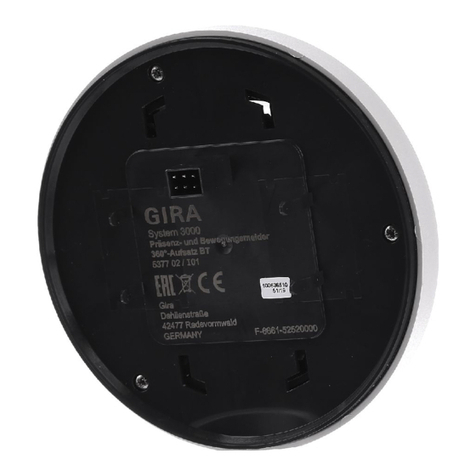
Gira
Gira System 3000 User manual

Gira
Gira Tectiv 220 User manual
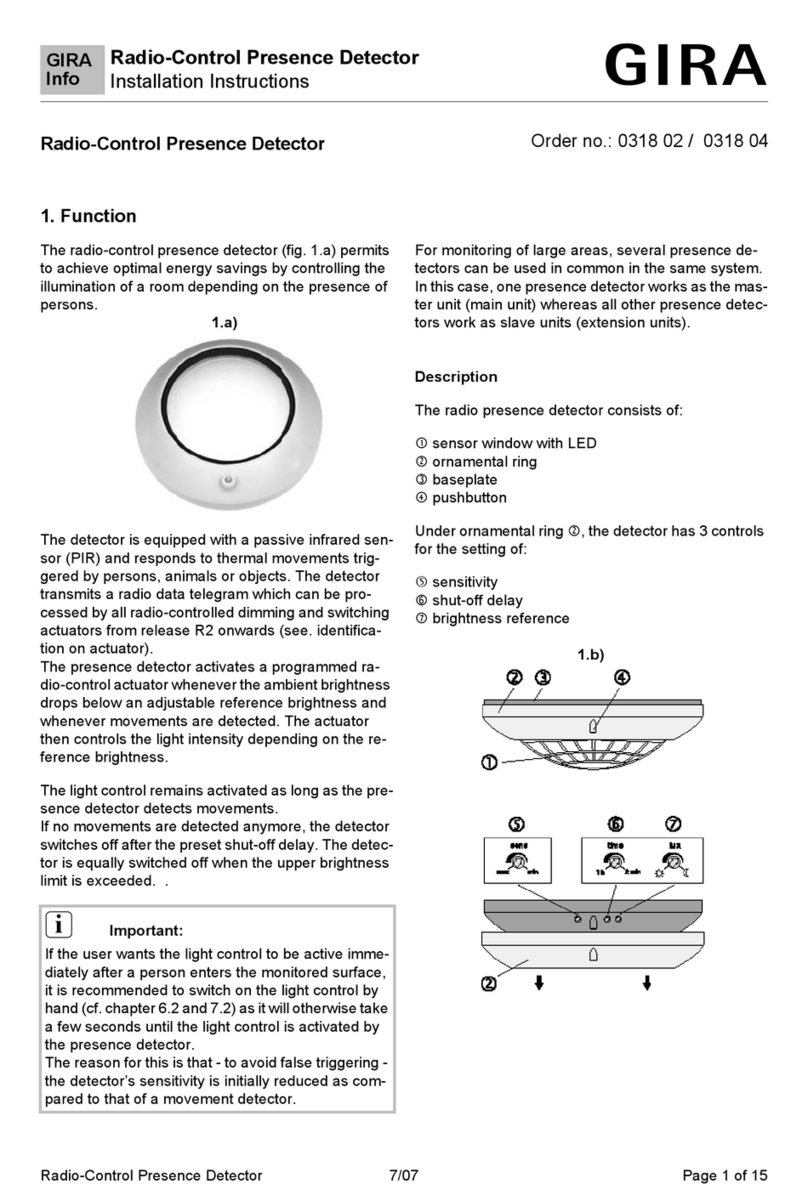
Gira
Gira 0318 04 User manual

Gira
Gira 2399 02 User manual

Gira
Gira 180 plus User manual

Gira
Gira System 3000 User manual
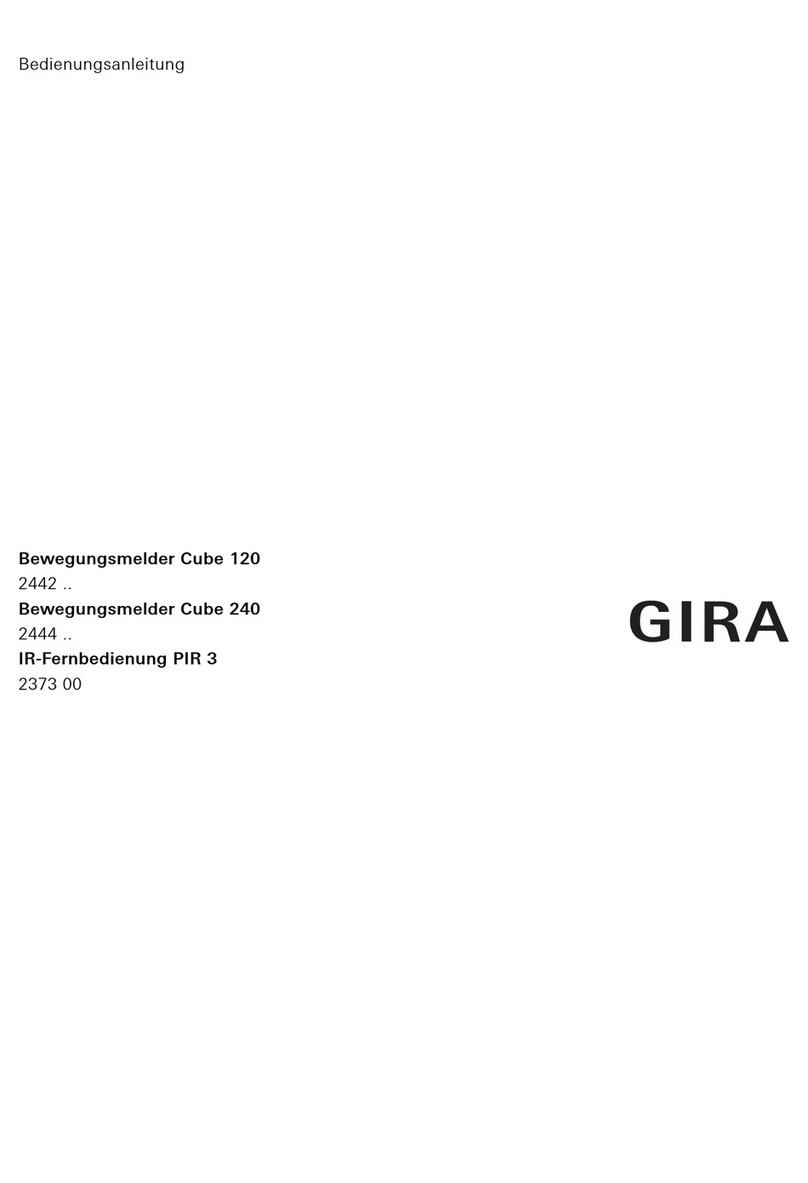
Gira
Gira Cube 120 User manual

Gira
Gira 5373 Series User manual
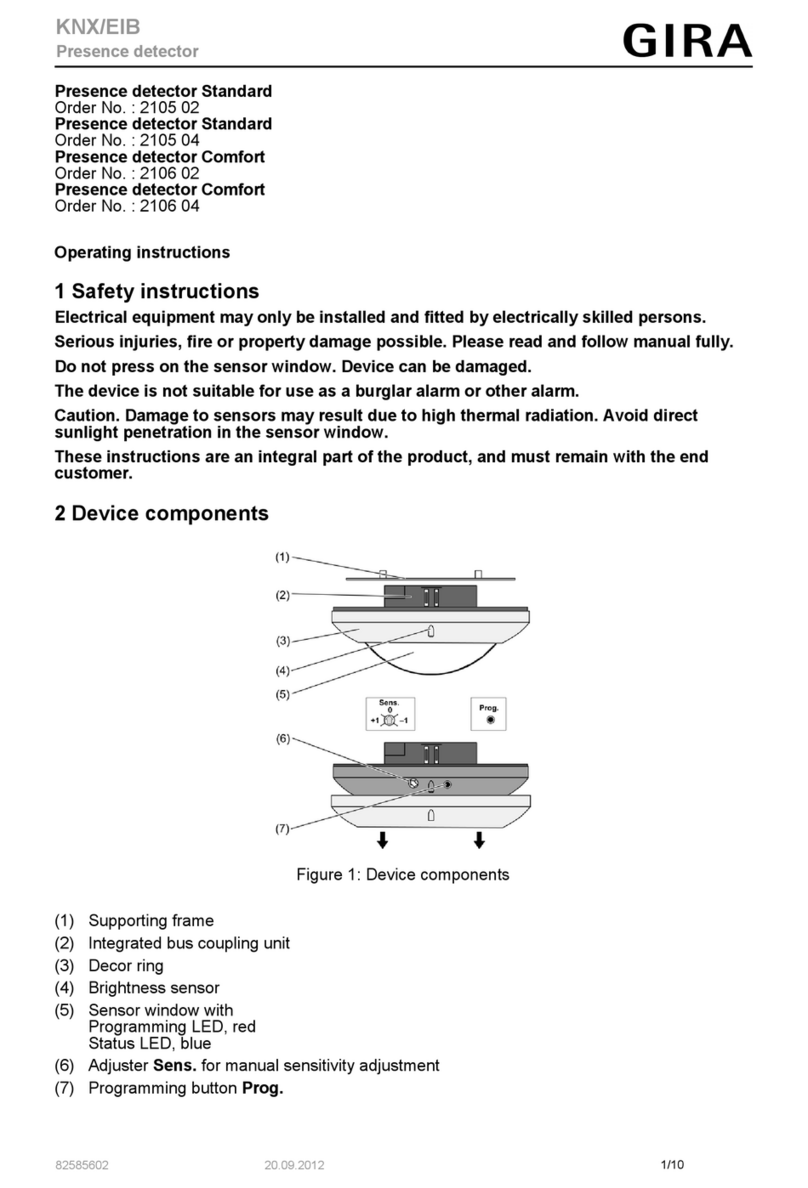
Gira
Gira 2105 02 User manual
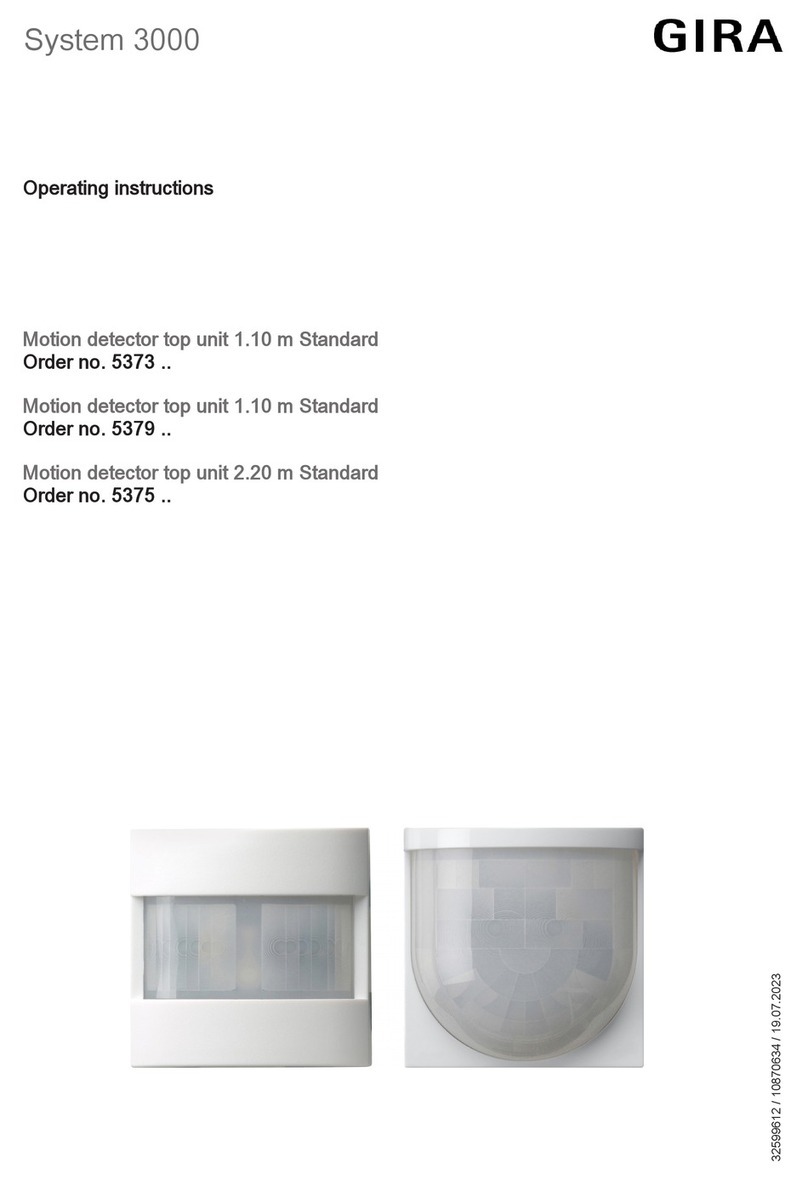
Gira
Gira System 3000 5373 Series User manual
